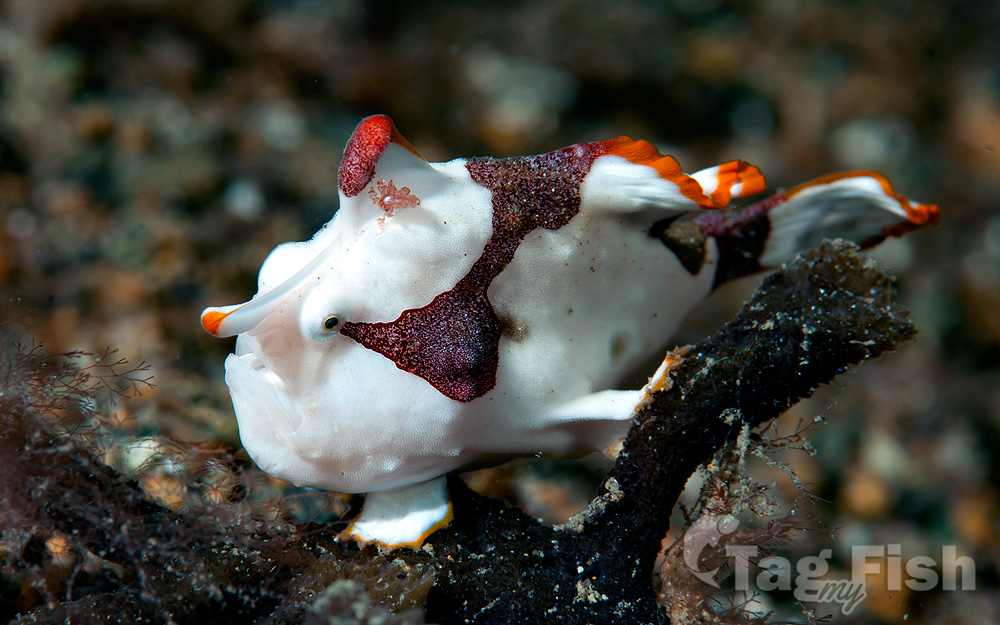Warty frogfish
(Antennarius maculatus)

Classification
General data
The warty frogfish grows up to 15 cm (6 in) long. Like other members of its family, it has a globulous, extensible body, and its soft skin is covered with small dermal spinules. The skin is covered with numerous small, wart-like protuberances. Its large prognathous mouth allows it to consume prey of the same size. The coloring of its body is extremely variable because it tends to match its living environment.
Frogfishes have the capacity to change coloration and pigment patterns in a few weeks: during coral bleaching events, they can even turn to plain white to blend in with the environment. However, the dominant coloration goes from white to black, passing through a whole range of related nuances such as cream, pink, yellow, red, and brown, often with dark, circular spots and/or with saddles. Some heavily spotted specimens can easily be confused with its close relative Antennarius pictus. This characteristic can help to separate them: usually, A. maculatus has red or orange margins on all fins and sometimes a spike of the saddle blotch starts posterior to the eye.
The first dorsal spine, the illicium is modified and is used as a fishing rod. Its extremity is endowed with a characteristic esca (lure), which looks like a small fish with a pinkish to brownish coloration. The illicium is twice the length of the second dorsal spine and its often darkly banded. The second dorsal spine is practically straight and is mobile, and the third one is bent towards the back of the body; both are membranously attached to the head. They are well separated from each other and also from the dorsal fin.
The pectoral fins are angled and help, with the pelvic fins, to move the fish on the bottom and to keep a stable position for an ambush.
The warty frogfish exhibits biofluorescence, that is, when illuminated by blue or ultraviolet light, it re-emits it as red, and appears differently than under white light illumination. Biofluorescence may assist intraspecific communication and camouflage.
Distribution
Indo-West Pacific: Maldives and Mauritius to Indonesia, Singapore, the Philippines, Papua New Guinea, and the Solomon Islands.











